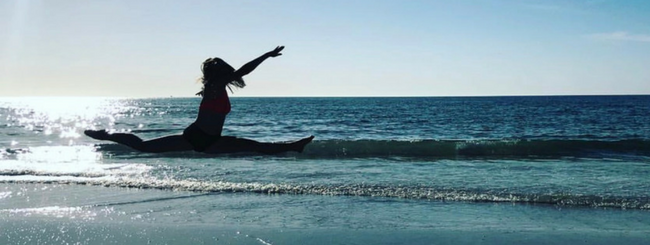Fear is powerful. It is as powerful as confidence. Unfortunately, fear begets a very different result. Fear is often the result of a bad experience, but it can also be ingrained in us without ever having experienced something that made us fearful of the thing we dread.
For the purpose of this article, I write about fear brought on by injury (not the fear of heights or flying or various things that give us anxiety for no good apparent reason). Fear after injury can cause us to fear returning to a sport because our head says that it might happen again. There is often a make or break decision-making moment when you decide not to let a traumatic experience keep you from being you.
The Trauma Causing Fear
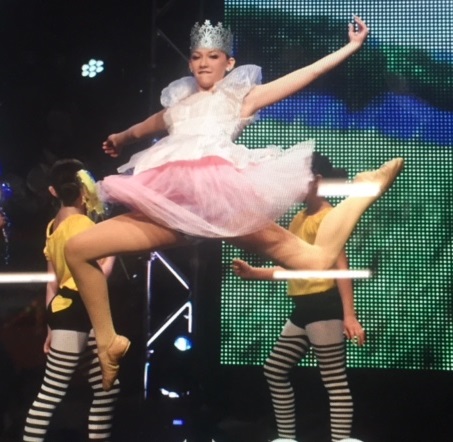 My daughter is a ballet and lyrical dancer. I’m pretty sure she danced before she walked, it’s like there was a musicality inside of her from the day she was born. We decided to get her started early, professional lessons at the age of 3 that continue still today.
My daughter is a ballet and lyrical dancer. I’m pretty sure she danced before she walked, it’s like there was a musicality inside of her from the day she was born. We decided to get her started early, professional lessons at the age of 3 that continue still today.
She’s 15 now, and the studio is her home away from home. When we are at home, we still help her move furniture around to create a makeshift dance floor (and when we’re at the grocery store we have to remind her to refrain from leaps and turns down the aisles, unless it’s not too crowded then we tell her to go for it 😉 ). She is a graceful and amazingly talented dancer, and she can hang in any athletic activity that she takes on (must be in the genes LOL…if you know me personally, that would make you laugh).
I believe wholeheartedly that dance is a sport. The incredible athleticism that is required to make the technique appear effortless requires a ton of training and persistent effort. (have you ever tried a chaîné in releve into a calypso? #takethechallenge and try to make it look like it required no effort. I’ve taken the challenge, and it didn’t look effortless!) But, note, I’m not writing a piece about dance or trying to convince anyone that it takes an athlete to do it, but it’s part of our story and it’s the experience that we lived which gives me my perspective.
So, what happens when you train and train, and train some more, only to suffer a traumatic injury that makes you fear that it’s all over? Well that’s what happened to her, and it almost ended her desire to dance, and it broke our hearts. We thought we may never see her on stage in her most pure and graceful form again, was it over? Really??
She was Glinda the Good Witch in a Wizard of Oz production at the biggest competition in our region, Showstoppers. She had just completed a series of turns, into a leg lift and roll on the floor (for which I am sure there are more technical ballet terms) – immediately she was screaming out in pain for help, it was trauma in more ways than one.
We picked her up and ran her backstage only to be shocked by what we saw and how bad the injury was. Her knee cap had been severely dislocated and was sticking straight out of the side of her leg, I literally cupped her kneecap in my hand thinking for a second that I could fix this, that I could put it back, but heck no was my realization to self in this problem-solving mom moment, I knew there was no way I should try to fix this. I was in shock and awe of what had happened, and she was literally going into shock. The maneuver she had made was nothing she hadn’t done a million times before, so why NOW!? What happened?
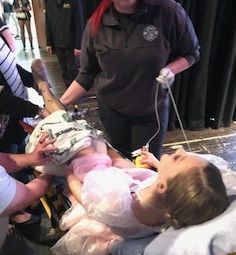 Long story short, the show was shut down until EMTs could get to her backstage and then a drug-induced trip to the ER ensued. Her kneecap was reunited with its socket, she was placed in an immobilizer, on crutches and on a journey to 8 weeks of daily physical therapy. We opted out of a surgical option that could tighten up her ‘loose’ joints; at this point, it was a matter of waiting for torn ligaments to heal and her growth plates to fuse together before making that kind of decision.
Long story short, the show was shut down until EMTs could get to her backstage and then a drug-induced trip to the ER ensued. Her kneecap was reunited with its socket, she was placed in an immobilizer, on crutches and on a journey to 8 weeks of daily physical therapy. We opted out of a surgical option that could tighten up her ‘loose’ joints; at this point, it was a matter of waiting for torn ligaments to heal and her growth plates to fuse together before making that kind of decision.
Everything we did after the injury was for recovery, strength, prevention and more prevention. But we couldn’t seem to strengthen her mind. That was the part of this process that we weren’t expecting and couldn’t plan for or make it go away for her, she was scared to dance again. She thought she was done for good.
Post- Injury Fear
We’re not robots. Yes, our bodies are very much like machines but our minds don’t input or output the same way. When the damage is done, the damage can be permanent (unless we also 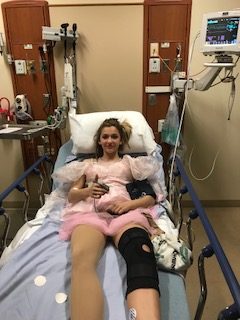 train our mind to recover and overcome). In the first couple weeks of her injury, she didn’t even want to see her dance family or be anywhere near the studio.
train our mind to recover and overcome). In the first couple weeks of her injury, she didn’t even want to see her dance family or be anywhere near the studio.
The association of pain, trauma and even embarrassment in the way that it happened so publicly made her go into a mode of total disassociation. And, at first, we let her take a step back and we did not push her to move too fast. But two weeks in, we felt it was time to start mentally preparing her for being back to who she is.
Dance is the art that is in her nature. It is her personal, God-given talent for expressing herself. Of course, after only two weeks she was definitely not ready, physically; but this did not mean that she couldn’t start to conquer her mental fear by putting her physical self back into her norm. Through this experience, there was discovery …
Steps to post-injury healing of the spirit:
1. Know that this is temporary, and remind yourself of it daily. This is probably the most distinctive and memorable thing that I took from that path-changing day. When we left the hospital and had an exhaling, therapeutic hug, and cry, she said to me ‘mom, I got through it by telling myself that this pain isn’t permanent’. From the mouths of babes.
2. Know that you are not alone, this happens to athletes and they recover. You aren’t the first or last person who has been seriously injured playing your sport, in fact, you can count blessings when it isn’t worse and/or permanently derailing. Find examples and inspirations of athletes in your sport who overcame injury and worked through the fear to come back strong. Also, recognize yourself as an example to others who may one day experience this type of disheartening event themselves and would look up to you in the way that you persevered and didn’t quit despite the fear.
3. Be part of your routine, don’t sit at home waiting to heal before you get back to some normalcy. I don’t mean to get back at it physically, but get back at it mentally as much as possible. In our situation, two weeks after the incident, I encouraged my daughter to wear her dance shoes around the house and to show face at the studio, even though she couldn’t physically participate.
Her mind needed to be there, even if her body couldn’t. Distance does not make the heart grow fonder. You can’t be absent from what you do for too long or else your body starts to tell your mind that the thing you do isn’t you anymore. Just show up, keep yourself into it mentally.
4. Do your therapy, stick to the program and be diligent in your recovery. This probably sounds more like step one. There are all types of injury, some more severe and requiring more recovery than others, and some brought on by a genetic or predisposed anatomical thing that makes you more prone to injury (i.e. ‘loose’ joints).
In our case, she’s very flexible (which is great, but not so great if your tendons are too long and you’re more susceptible to dislocating joints). So, for us, the focus was strengthening tendons and doing family activities that we knew would help her to gain more strength (i.e. bicycling, on flat terrain to start with of course).
‘When the body is strong, the mind thinks strong thoughts’ – Henry Rollins
5. Time does heal wounds, both of the body and the mind. Fear from trauma can be intense and it feels like it will never go away. But eventually the painful memory is less painful – pain turns to growth through the suffering. Ease your way in, think babysteps. First, you’re just putting your game shoes on. Next, you’re showing up and watching plays, or choreo 😉 , and then, before you know it, you’re working in a move here and there. 6, 8, 12 weeks (or a year+) is not life in it’s whole.
You’re only part way through a chapter and you have more to write, so let time do it’s thing. Stay positive and keep telling yourself to stay positive.
The Power of Support
If you’re not on the receiving end of a painful injury, be the supporter. And, in a terrible event where a full recovery and return to the sport cannot happen, modify the activity and/or encourage participation (if/when possible) in order that recovery of the mind may be within reach. As a personal trainer, you may have a client who has suffered an injury and has to be out of the gym for awhile.
Don’t give up on them. In fact, do the opposite, ask them how they’re doing, let them know you care. Get them involved somehow, if possible. Maybe they can come into the gym to be part of something that doesn’t involve their injury.
Or offer a session in their home where you help them go through their PT exercises. If they are in physical therapy, then they’ve been given a list of exercises to do at home, but sometimes PT patients get down and out and become complacent about their at-home PT – that’s where you can help.
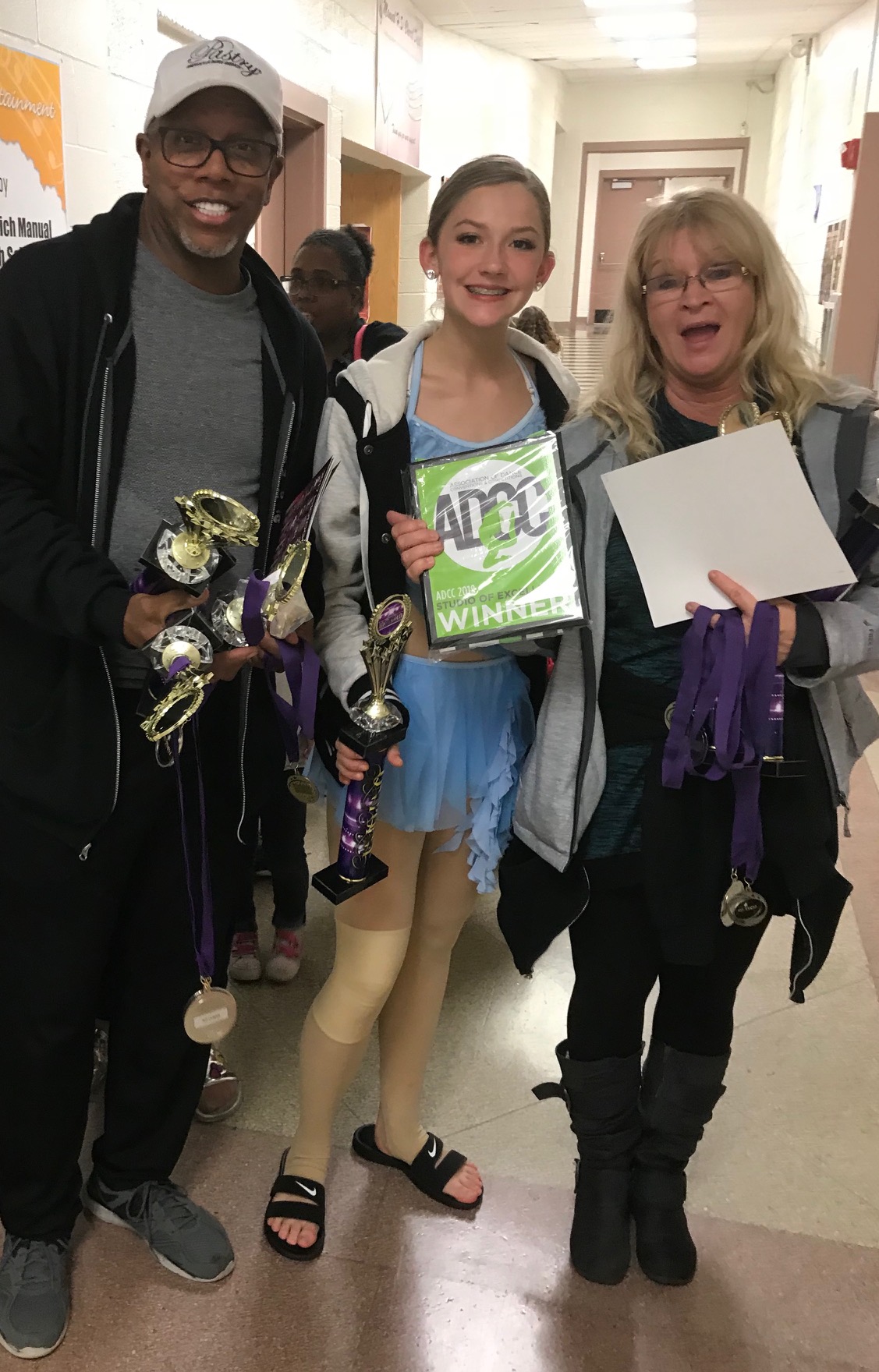 Accountability and encouragement from family and friends (and trainers) goes a long way to recovery. Putting this into context of our own situation, I saw early on that her recovery could have gone all wrong had we not been careful to use encouraging words, remind her to do PT exercises, and had a coach who really cared.
Accountability and encouragement from family and friends (and trainers) goes a long way to recovery. Putting this into context of our own situation, I saw early on that her recovery could have gone all wrong had we not been careful to use encouraging words, remind her to do PT exercises, and had a coach who really cared.
Her dance instructor called, texted and offered all kinds of encouragements to her during a difficult healing process. 6 weeks after the injury occurred was the annual company recital, and she still couldn’t dance. But, instead of her sitting the sidelines, her instructor completely reworked the choreo so that she could play Glinda without turning, leaping or rolling.
Keep in mind, putting that costume on was as difficult for her as anything else, mentally, but we felt that it was therapeutic and helped her to realize her ability to overcome. I remembered, immediately after her injury, she said she’d never put that costume on again …and 6 weeks later she floated across the stage as beautiful as ever).
She was also asked to help with the mini-dancers’ summer camp, which lifted her spirits and let her use her gifts in a different way. All of these supportive efforts were crucial in her mental recovery. And, though you may not be training a dancer, these are examples of how her coach/instructor/trainer kept her involved in supportive ways which were pivotal in how she recovered.
On this note, I write a personal thank you to Becky Floyd of Dance Dynamics for her commitment to my daughter (and all of her students) as individuals with mental states that can be broken or healed by the handling.
Fear Overcomer
When your sport, your hobby, your game is your passion, then you can’t help yourself. It’s part of you. Fear can only limit you for so long. Your ‘out of order’ sign is temporary and it doesn’t take anything away from who you are, what you do, or what you have to give. Now get out there and dance like no one’s watching!
